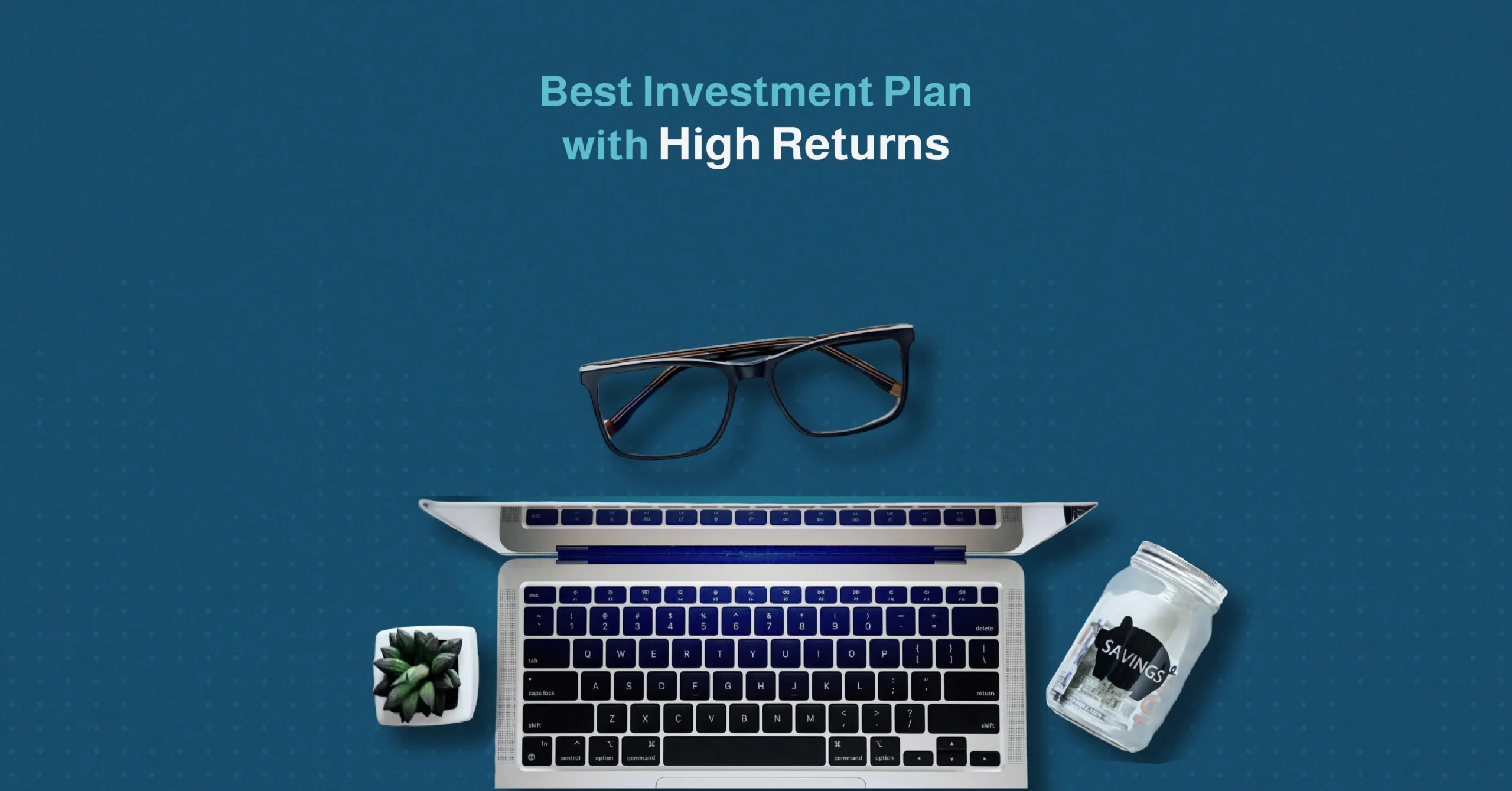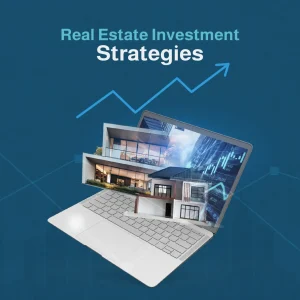In 2025, the financial word is shifting – again. Interest rates are on a come down, technology is gaining momentum across industries, and inflation is projected to decline to 4.8% in 2025 from 5.9% in 2023. In response to this, smart investors are revisiting their investment strategies.
The global financial market is fast-paced and evolving, choosing the best investment plan with high returns has never been more accessible and achievable.
With that being said, more options means investors are drowning in trends, advice and ‘get rich quick’ schemes. This makes it difficult to tell the difference between an authentic opportunity and something too risky—or even a scam.
In this guide, we cut through the noise and break down top- performing strategies, showing you how to pick the best investment plan with high returns in 2025.
You can start investing now from the Gamma Asset Investment Platform
Exploring the Best Investment Plans with High Returns
Finding the best investment plan with high returns requires a clear investment goal, and a level of knowledge of what actually works to move with confidence. Setting clear goals gives you a framework to evaluate opportunities and what will work best for you. Not every investment is right for your journey.
Are you looking to build your retirement fund, generate passive income or compound your portfolio? This type of filtering saves you time and costly mistakes. So whatever your investment objectives, different goals call for a different investment strategy.
With that in mind, here are 5 best investment plans with high returns in 2025
- Growth Stocks:
Growth stocks are shares in different companies projected to increase at an above average rate compared to other markets. Innovative sectors like artificial intelligence, clean energy and biotechnology are attracting investor interest in recent years. Growth stocks are perfect for investors with a higher risk tolerance and long-term investment goals.
- Equity Mutual Funds & ETFs:
Equity-based mutual funds and ETFs (exchange-traded funds) are pooled investment funds where investors can invest in a variety of stocks or bonds, creating instant diversification. These are great for investors looking for consistent, long-term growth. Because you’re not betting on a single stock, you’re reducing the risk of experiencing the volatility of a single market.
- Real Estate Investment Trusts (REITs)
These are companies that provide everyday investors a way to earn real estate investment returns without directly owning the property. REITs own, operate, or finance income-generating real estate and are popular for their yields and low capital entry points, making them great for portfolio diversification and steady passive income.
- Peer-to- Peer Lending Platforms
Peer-to-peer lending platforms connect individuals and small businesses directly to investors. Investors act as lenders on the platforms, earning interest in return. In 2025, these platforms are more sophisticated than ever, offering approximately 8-12% in returns with built-in tools for vetting borrowing risk. Be cautious when using these platforms as they carry a credit risk, but if you can get past that, peer-to-peer platforms can be very lucrative and diversify your portfolio.
- Cryptocurrency & Blockchain Funds:
These funds pool investor capital to invest in various digital assets or blockchain-based companies. They provide exposure to cryptocurrencies while offering the benefit of professional management. Although crypto remains volatile, increased institutional adoption and real-world utility are stabilizing key projects. For those asking where can I get 15% return on investment, certain crypto funds represent one of the few asset classes where such returns are possible—albeit with higher risk.
What to Look for in an Investment Plan with High Returns
A thoughtful, well-informed approach separates smart investing and leaving money on the table. Choosing the best investment plan with high returns isn’t about chasing profits, you have to consider your financial goals, risk tolerance and long-term alignment.
(H3)Key factors to consider when choosing an investment plan:
- Time Frame
If your investment goal is retirement and is a good 25 years away, you can afford more volatility. But you’ll want more stable liquid assets if you’ll need returns within a year or two. Your investment timeframe directly affects the type of assets you should invest in.
- Fees and Costs:
Always compare fees and costs to identify low-cost options. Trading commissions, investment management fees, and some hidden investment fees can quietly limit your profit potential over time.
- Risk Tolerance
Every investor’s risk profile is unique. Your returns will depend on your capacity to handle market changes. A smart investor knows higher returns often come with an increased risk, it’s important to know how much of this risk you’re comfortable taking on. Knowing and understanding your risk tolerance helps avoid impulsive decisions during market turbulence.
- Liquidity:
You should consider how quickly you may need to access your investment funds, some investments lock your money away for months or years. Options like ETFs or growth stocks are easy to exit, while private equity and real estate may have your capital tied for a period of time.
- Tax Implications:
Different investments have different tax benefits. Some offer tax-deferred growth, while others generate taxable income. Take advantage of tax-advantaged accounts like IRAs or use tax-efficient funds to increase your returns.
- Diversification:
A diversified portfolio spreads risk across different asset types and markets which reduces the implications of a single poor-performing investment. You can mix stocks, real estate, crypto, ETFs etc.
Comparing Different Investment Options for High Returns
Finding the best investment plan with high returns means understanding the unique strengths, risks, and return potential of each asset class. In 2025, evolving market conditions, technological innovation, and changing consumer behavior are reshaping the investment landscape.
Let’s break down how different asset classes stack up in 2025 for choosing the best investment plan with high returns.
| Investment Type | Expected Return (2025 est.) | Risk Level | Liquidity | Source |
| Stock Market (ETFs) | 8–12% | Moderate | High | iShares |
| Real Estate / REITs | ~9% | Moderate | Medium | S&P Global |
| Crypto Assets | 15–25% | High | High | Axios |
| P2P Lending | 8–12% | Moderate | Medium | Forex GDP |
| Bonds (High-Yield) | 5–7% | Low-Moderate | High | Invesco |
| Commodities (Gold, etc.) | 4–6% | Medium | High | Reuters |
Build a Diversified Investment Portfolio with High Returns with these Strategies
Smart investors know that combining multiple strategies and assets maximizes returns while managing risk. Relying on one strategy or asset class may leave your portfolio exposed. The key is balance—use proven frameworks that give you both stability and growth potential
Here’s how to structure your portfolio:
- Geographic Diversification
Don’t just invest locally. Consider international funds or global ETFs to capture growth in emerging markets. Exposure to different regions reduces exposure to a single economy and opens opportunities to growing sectors abroad.
- Core-Satellite Approach
Keep 70–80% of your capital in core assets like index funds and bonds. Use the remaining 20–30% for higher-risk, high-reward plays like tech stocks or crypto. This strategy allows you to build a stable foundation while still having room for growth and innovation-driven returns in your portfolio.
- Use Tax-Advantaged Accounts
Maximize retirement accounts, tax-free savings, and similar structures to increase your net returns. Accounts like Roth IRAs, 401(k)s, or government-backed savings schemes can reduce your tax burden, helping your investments compound more effectively.
- Dollar-Cost Averaging (DCA)
Invest a fixed amount regularly. This reduces the impact of market volatility and builds discipline. It’s especially useful in volatile markets, as it ensures you’re buying in at a variety of price points instead of trying to predict the perfect moment.
- Rebalancing
Review your portfolio quarterly. Shift assets as needed to stay aligned with your goals. Over time, certain investments may grow faster than others, throwing your portfolio off balance. Regular rebalancing ensures that you maintain your desired risk level and keep your investment plan on track.
More topics can be read on the Gamma blog
Tips for Maximizing Returns on Your Investment Plan
How you manage your investment strategy long-term influences your potential returns. Choosing the best investment plan with high returns isn’t just about what you invest in, it is also the stability of your strategy over time.
A consistent, well-structured approach helps you stay focused during market ups and downs, avoiding emotional decisions that can derail your progress. Rather than constantly switching strategies or chasing trends, successful investors stick to a clear plan, adjusting only when their goals or financial circumstances change. This kind of discipline builds momentum over time and allows your investments to grow steadily through compounding and smart allocation.
Here are some practical tips:
- Stay Informed
The market moves fast, and staying updated gives you a head start. Read financial news, subscribe to expert newsletters, listen to market analysis podcasts, download relevant apps on your phone and follow market trends.
- Avoid Emotional Decisions
Don’t panic sell during market dips or chase hype during bull runs. Stick to the plan and trust your research and data. Long-term consistency outlasts emotional decisions.
- Automate Where You Can
Set up automations in your investment plan and strategy. Use tools like robo-advisors or auto-deposits to stay consistent and ensure you’re always streamlined in your investment journey.
- Performance Tracking
Use tools like spreadsheets or apps to review your returns regularly. Monitoring your investments is a preventative measure where you can identify underperforming investments and catch opportunities. At Gamma Assets, we have an all-in-one dashboard that makes it easier to monitor your portfolio across asset classes, helping you make informed decisions in real time.
- Invest in What You Understand
Never put money into something you don’t fully grasp. Avoid complicated or overly hyped investments unless you’ve done proper research. If you can’t explain how an investment works, it’s a sign to dig deeper or skip it entirely
(H2)Building the Best Investment Plan with High Returns
High returns don’t happen by accident—they’re the result of intentional planning, disciplined habits, and smart decision-making. Many new investors fall into the trap of chasing trends or trying to “time” the market, only to end up disappointed. The reality is that sustainable wealth is built over time, not overnight. A successful plan begins with clarity around your goals and a strategy tailored to your risk tolerance and time frame.
Building the best investment plan with high returns should not be about trends or chasing profit, it’s about strategy, clarity and steady execution. If your goal is long-term growth or looking to invest $10,000 for a quick return, your best approach is research, diversification and consistent execution.













